This wonderful Cornish workshop and museum is dedicated to the legacy of studio pottery trailblazer Bernard Leach
The Body Beautiful: Tunji Adeniyi-Jones
The Body Beautiful: Tunji Adeniyi-Jones
9 Dec 2021
The Brooklyn-based British artist reveals the thinking behind his vibrant, figurative paintings with connections to the Nigerian canon, Duncan Grant and more
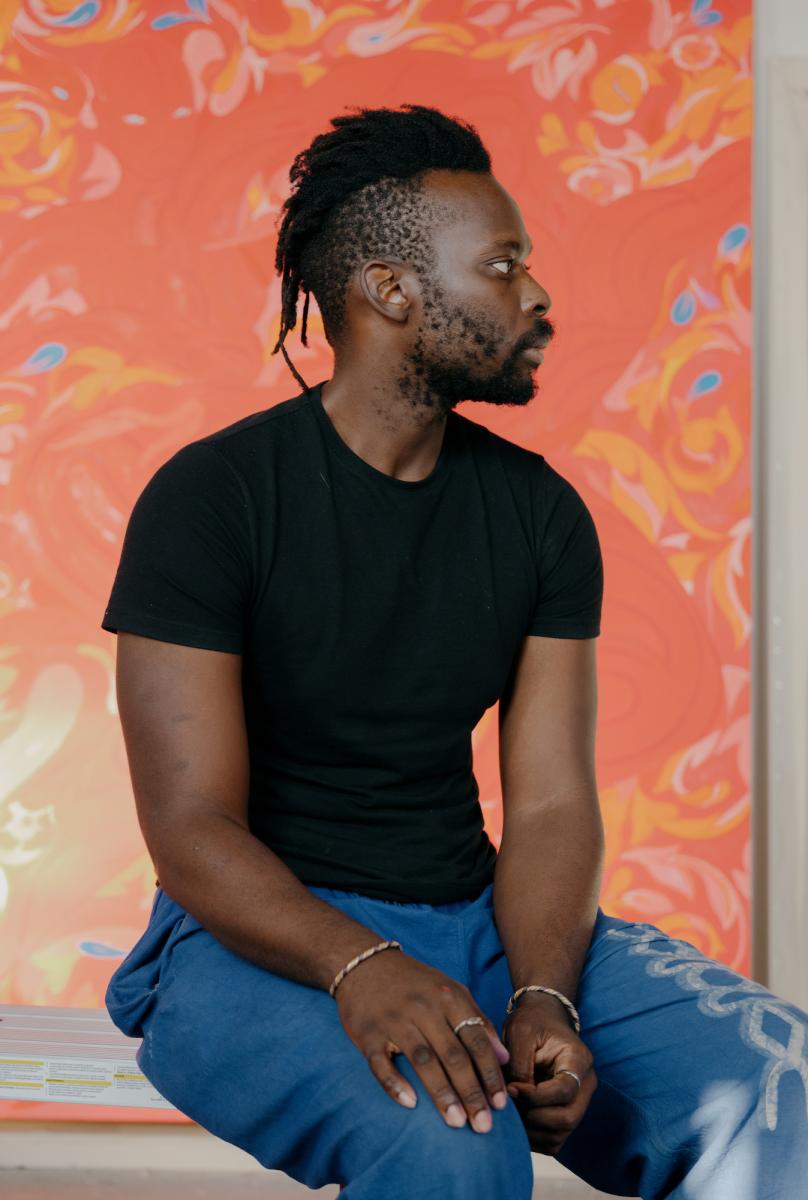
The artist photographed by William Jess Laird
It’s easy to get lost in Tunji Adeniyi-Jones’s Poetic Feet series. In each of the three works, vibrant red figures dance around the canvas among orange, pink and crimson flames. The way the subjects’ androgynous bodies float among the blaze makes the paintings feel almost dreamlike.
‘Red was and is my favourite colour,’ the 29-year-old says of his art, in one of the private spaces at White Cube in Bermondsey, where an exhibition titled That Which Binds Us showcases his recent work. His The Youth and The Virtues series, which are both on view, use rich, dark colours such as indigo. ‘A while ago I was just making a lot of red paintings and then blue seemed like the natural, cool alternative. I like the contrast.’
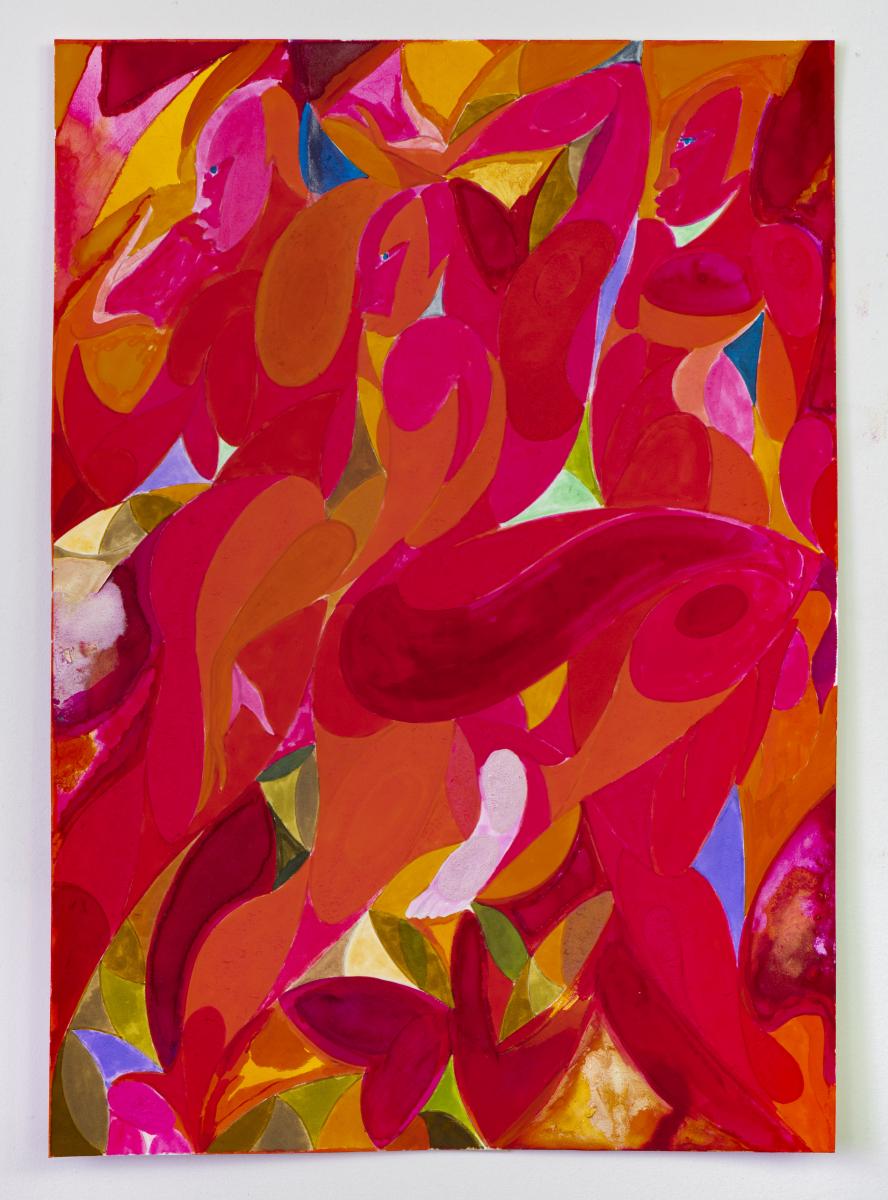
Three Red Figures Rising, 2021
Adeniyi-Jones’s work is also being exhibited at Charleston, the Sussex estate that was once home to Duncan Grant, along with other members of the Bloomsbury Group. ‘The Charleston show presents a different side to my practice. At points during the pandemic, you couldn't travel directly between London and America,’ he says. ‘I spent four weeks in total passing through Mexico City and that idle time afforded me a lot of space to make work [...] The Charleston works are a bit more experimental and open than the ones at White Cube because they were made without any particular destination [or gallery] in mind.’
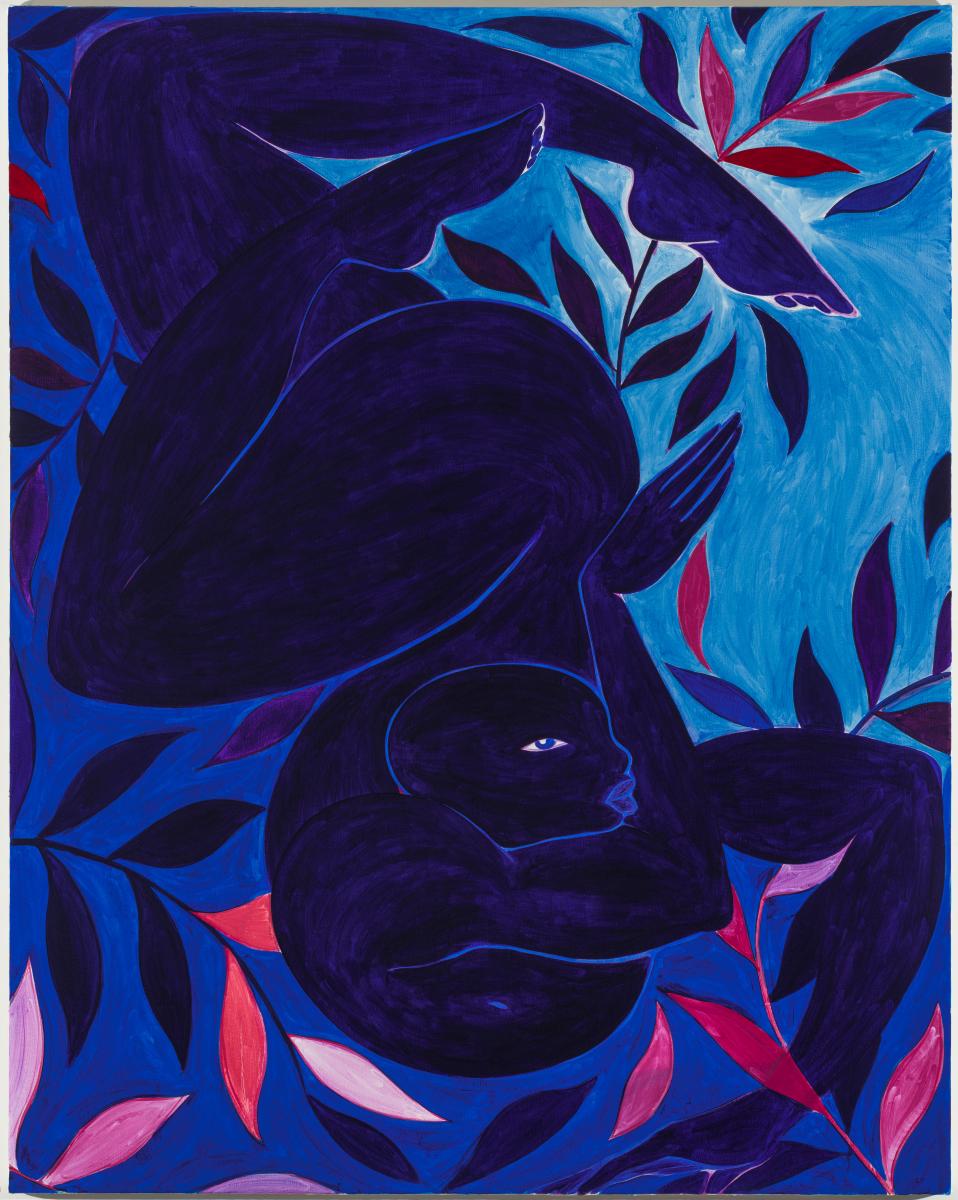
Blue Dancer, 2017
At Charleston, an exhibition of Grant's work from the 1920s is also on show. It is said to continue with the themes from Adeniyi-Jones’s exhibition. ‘I feel like it really works on the level of travel,’ he says of the connection made between him and Grant. ‘His practice was spurred on by his experiences moving around Europe, gathering objects and historical artefacts and learning from them. That's the main way I align myself with his work in this show.’
Adeniyi-Jones was initially influenced by a trip to Nigeria with his uncle, while still a student at Oxford University. ‘Suddenly the two separate parts of my background joined,’ he says of his British upbringing and Nigerian heritage. His work draws on European and north-east American abstraction, European figuration and West African mythology.
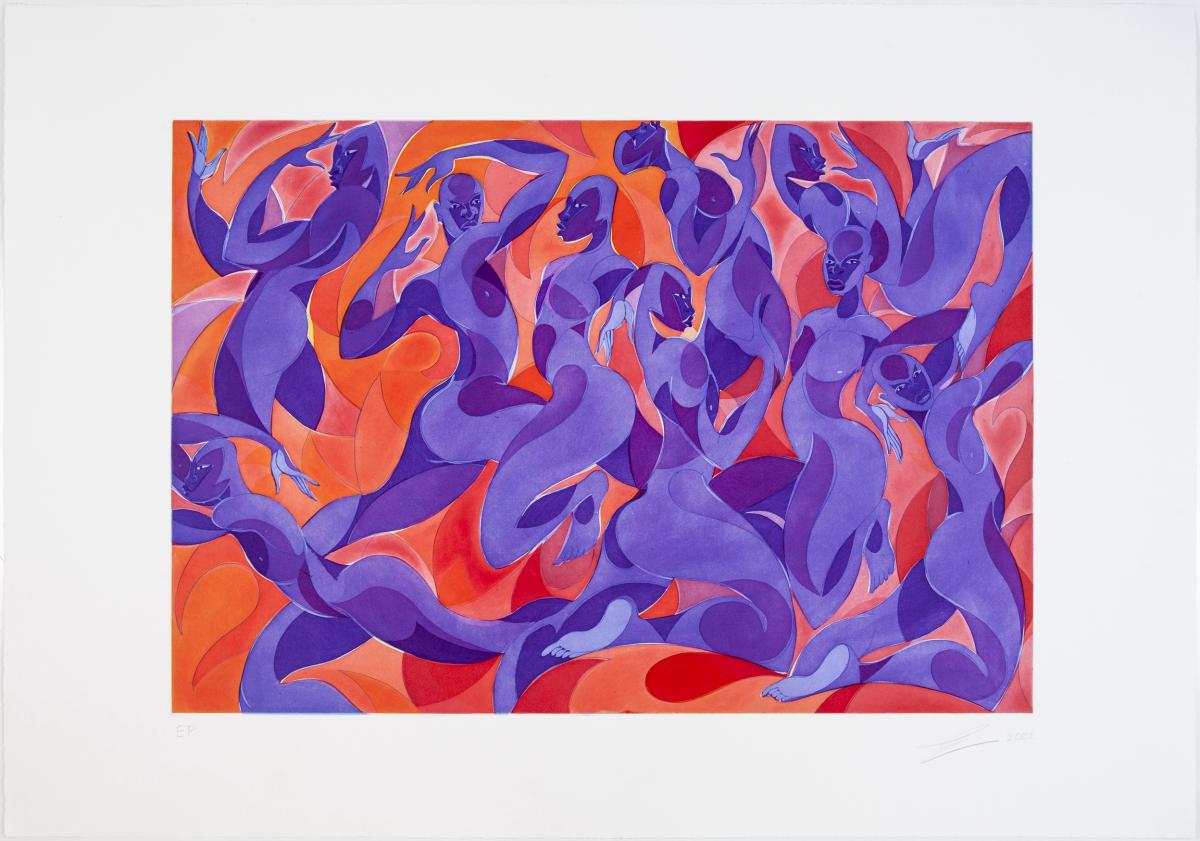
Astral Reflections, 2021
Before his trip, he was looking at artists such as Lucian Freud, Jenny Saville and classical British paintings, but his uncle introduced an alternative canon. ‘My uncle introduced me to a host of iconic artists. People I didn’t really know about before, but who have been at the forefront of contemporary Nigerian art for over 50 years,’ he says. The ‘legendary’ artists included Bruce Onobrakpeya, Ndidi Dike and Olu Amoda. However, it wasn’t until Adeniyi-Jones moved to New York that the two parts of his self were consolidated. ‘My sense of identity became stronger because I was in a new environment that was challenging it,’ he says. ‘[My background] merged together quite seamlessly.’
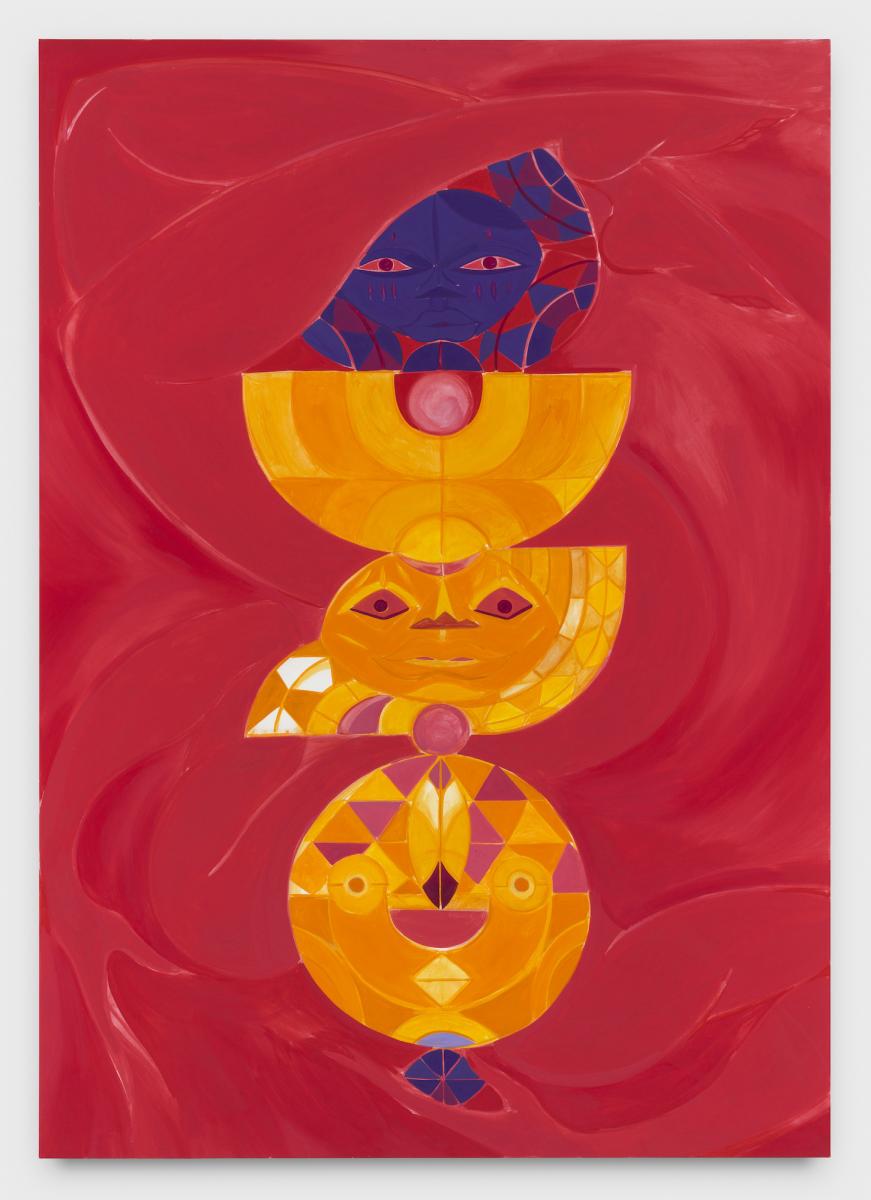
Red Ancestor II, 2020
That being said, many people reference Henri Matisse when looking at Adeniyi-Jones’s work, notably the Fauvist’s Blue Nudes lithographs, which feature nude female figures formed from overlapping cut-outs of blue painted paper and were inspired by the artist's collection of African sculptures and a trip to Tahiti in 1930. Adeniyi-Jones cringes at the comparison. ‘I don't look at Matisse,’ he explains. ‘I'm trying to rationalise whether it’s something that I should continue to object to in such a way,’ – which he finds himself doing often. ‘I guess my issue is that my work isn't that simple. When people jump to Matisse too quickly, I'm like, “No, you haven't figured it out yet”.’
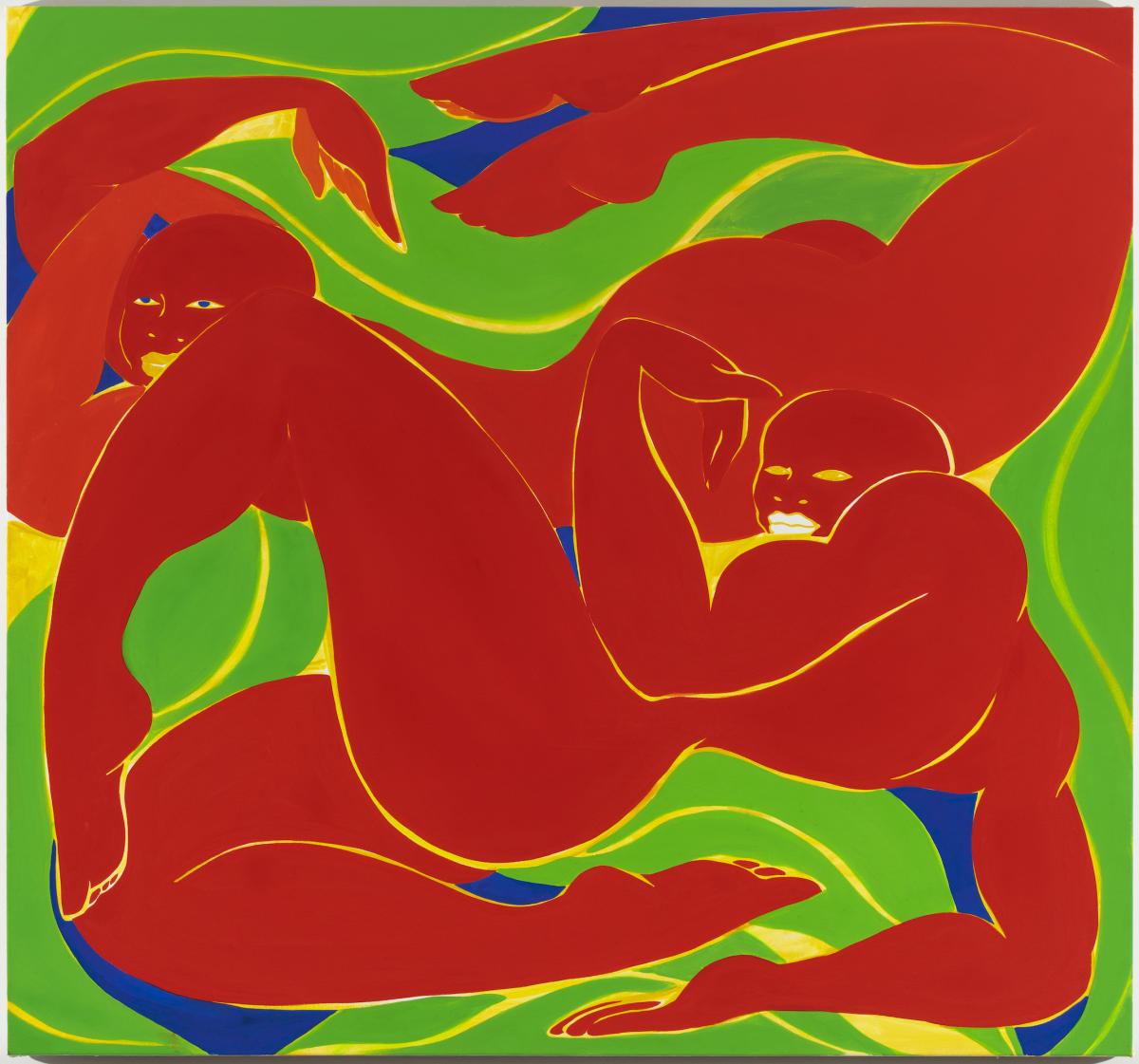
Red Twins, 2016
SEE
That Which Binds Us at White Cube Bermondsey until 9 January 2022
Tunji Adeniyi-Jones: Astral Reflections, at Charleston, East Sussex until 13 March 2022
About the Author
Precious Adesina
Precious Adesina is a freelance culture writer published in TIME, Financial Times, BBC, The Economist, The Art Newspaper and more. She has also given talks at Whitechapel Gallery and Nottingham Contemporary on arts writing and research.
JOIN OUR MAILING LIST
Become an instant expert!
Find out more about the arts by becoming a Supporter of The Arts Society.
For just £20 a year you will receive invitations to exclusive member events and courses, special offers and concessions, our regular newsletter and our beautiful arts magazine, full of news, views, events and artist profiles.
FIND YOUR NEAREST SOCIETY
MORE FEATURES
Ever wanted to write a crime novel? As Britain’s annual crime writing festival opens, we uncover some top leads
It’s just 10 days until the Summer Olympic Games open in Paris. To mark the moment, Simon Inglis reveals how art and design play a key part in this, the world’s most spectacular multi-sport competition



